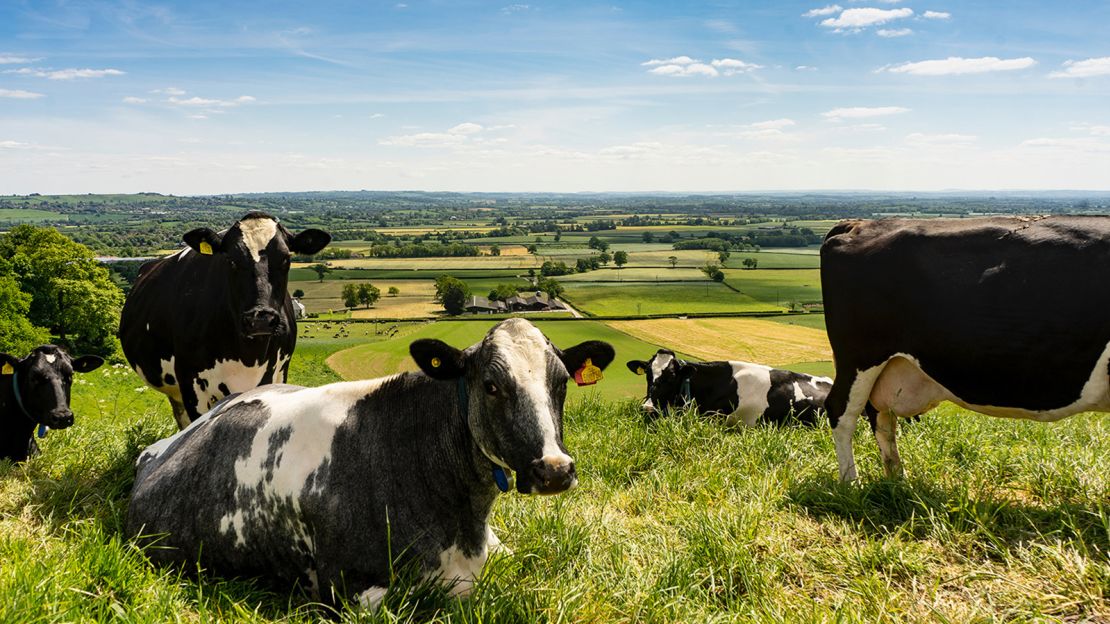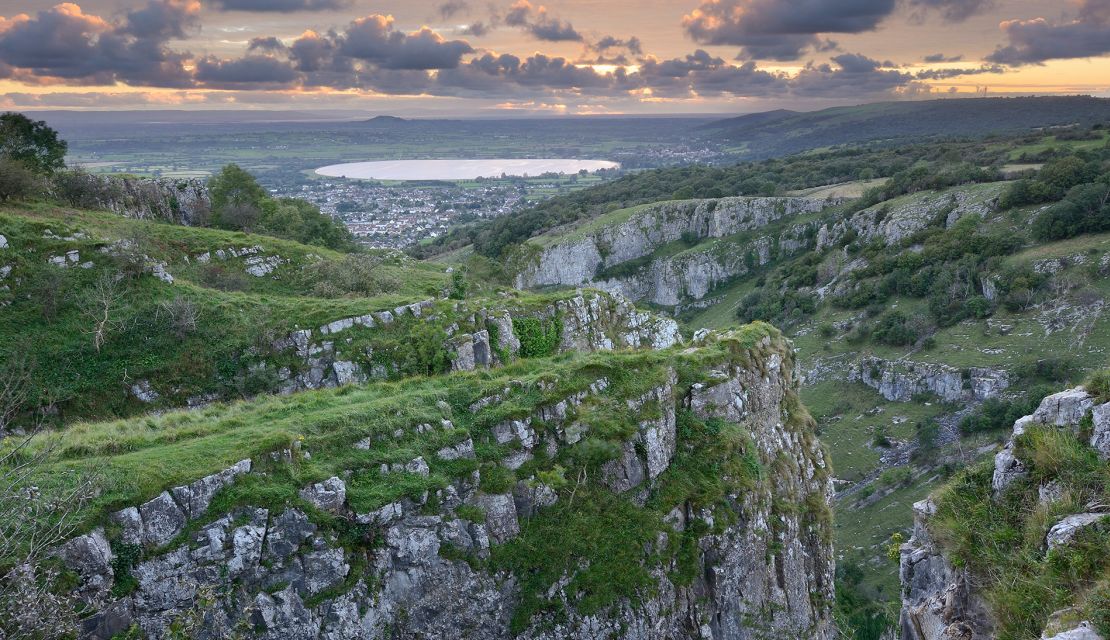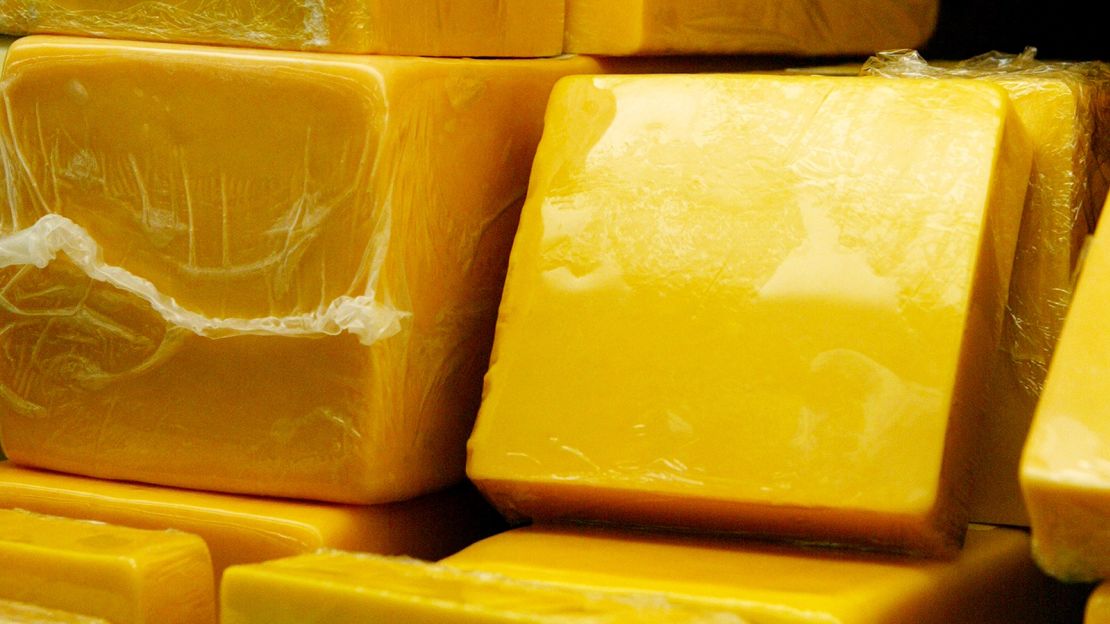Green-carpeted hills roll away from Maryland Farm in Somerset, England, where a man named Daniel Barber began making farmstead cheese in 1833. Nearly 200 years later, his family’s Barber’s Farmhouse business is still going strong, now the oldest cheddar-maker in the world.
“The valley we’re in here is one of the most fertile and densely used dairy areas in the UK,” says Barber’s Farmhouse managing director Giles Barber, who is Daniel Barber’s great-great-great-grandson.
“We’ve got many small farms, and most of them are still owned by individual families.” Fifteen miles away is the village of Cheddar itself, where early cheese makers used limestone caves and gorges as natural refrigerators. (While the village gave cheddar cheese a name, historians say the cheese style developed regionally.)
Today, Barber’s Farmhouse is one of a small handful of producers allowed to sell cheese labeled West Country Farmhouse Cheddar, a Protected Designation of Origin (PDO) with strict requirements. When making their Barber’s 1833 cheddar cheese, a cheese that’s included in the PDO, Barber’s producers use many techniques that the 19th-century founder would have recognized.

Milk comes from nearby dairy herds. Cheese curds are still turned over by hand. Eschewing the convenience of freeze-dried cultures, Barber’s Farmhouse maintains a collection of traditional cultures, strains of bacteria that convert milk’s natural lactose into flavorful lactic acid.
In an era of industrially produced, globalized food, Barber’s Farmhouse recalls a time when flavors and traditions were more regional.
But even when Daniel Barber first sold cheese in 1833, he was helping to nudge Britain’s food system towards the modern day. He couldn’t have known it, but his tangy, mellow cheddar was poised for a global expansion that leveraged immigration, technology and tradition.
Two centuries after Barber’s Farmhouse was founded in rural Somerset, cheddar is among the most popular cheeses in the world. Here’s how it happened.

Cheddar gets ready to travel
The bucolic Somerset region, home to both Barber’s Farmhouse and Cheddar village, has produced cheese since at least the 12th century, but that early cheese had little in common with today’s cheddar.
It took innovation – including the introduction of heavy, wooden cheese presses and a cooking stage – to make something more familiar to modern cheddar-lovers.
“The basic technology comes in place by the late 1700s,” says Paul Kindstedt, a cheese scientist at the University of Vermont and the author of “Cheese and Culture: A History of Cheese and its Place in Western Civilization.” Those adaptations increased quality and durability, producing a cheese that was easier to sell a long way from the original farmstead.
“All of English agriculture begins to be oriented around shipping products, including cheese, to the London market,” Kindstedt says. “That required developing cheeses that were designed for long-distance shipping in the context of the time.”
The resulting cheese was lower in moisture. It was also larger in size, which made the cheese less vulnerable to damage.
Somerset cheese-makers weren’t the only ones adapting their products to shipping, but by the late 1700s they edged out competitors from Cheshire to dominate London cheese shops.
“Cheddar becomes the cheese of choice,” says Kindstedt. “It was designed for the market and designed for shipping.”
The sun never sets on the cheddar empire
And as colonial immigrants scattered across the world, they brought English cheese-making traditions with them.
“Wherever the English go, cheddar reigns,” says Kindstedt. In North America, Kindstedt explains, many immigrants came from cheese-making regions such as the West Country and East Anglia that made cheddar-style cheese.
Striving to make a living in a new place, they decided on market-tested products from back home.
“Immigrants would simply call cheeses from the old country, the homeland, the same names in the new country,” he says.
Before long, the popularity of cheddar cheese from colonies and the United States shook the foundations of cheese-making back in Britain. In 1875, the US exported 100 million pounds of cheese to the UK. “The United States become the supplier of cheese to England, and basically destroyed the cheese-making business in England,” says Kindstedt.
It’s not just the United States. Kindstedt said that Canada eventually displaced the US as England’s number one cheese supplier. “Australia and New Zealand also become major suppliers of English cheese, and it’s cheddar, cheddar, cheddar,” he explains.
“Suddenly, it’s the most prevalent cheese produced in the world.”
When an American cheese was named best in the world
Who doesn’t like cheddar cheese?
While cheddar has an important legacy in many former British colonies, it’s far from a universal favorite in the vast portion of the globe once controlled by the United Kingdom.
Kindstedt believes the varied popularity of cheddar reflects, in part, the extent of displacement of native peoples in former colonies.
“America and Canada, Australia and New Zealand – the colonization overwhelmed the Indigenous population,” he says. “The preference for English-style cheese came ready-made with the people who then dominated the colonies that were set up.” (In French-speaking Canada, Kindstedt notes, there’s still a very strong preference for French-style cheeses.)
In places with less cultural displacement, cheddar didn’t stick.
India has a long tradition of fresh cheeses such as paneer, but imperial rule didn’t convince the country to love cheddar. It’s only recently that cheddar has gained ground in India, Kindstedt says.
In Kenya, another former British colony, cheese remains a very small part of the diet. (Lactose intolerance, which is common among people of Asian and African descent, is not the issue. Aged cheddar, like other hard, aged cheeses, is very low in lactose.)
“The English were a tiny minority [in those countries] and the Indigenous people were a vast majority, so the English love of cheese did not translate to a broad acceptance the way it did in the United States and Canada,” Kindstedt explains.
The rise and fall and rise of cheddar
Aged cheeses made by the descendants of Giles Barber are now sold in shops across the UK and at Whole Foods stores in the United States.
In the UK, cheddar remains the most popular cheese. It’s Canada’s cheese of choice, as well.
But in Australia, cheddar has long been losing ground to other varieties. While factory-made cheddar dominated New Zealand for decades, many smaller cheesemakers have turned to different cheeses.
And in the United States, cheddar’s officially lost its perch. In 2006, US Italian-style production, such as mozzarella, bypassed “American-style” cheeses, which include cheddar. Aside from a brief slip in 2009, mozzarella has stayed on top.
The catalyst for cheddar’s fall in the US would have been even more alien to Daniel Barber than a trip to Whole Foods: frozen pizza.
“It’s not that cheddar declined, it’s that there are more pre-made frozen foods,” says Gordon Edgar, a cheesemonger and the author of “Cheddar: A Journey to the Heart of America’s Most Iconic Cheese.”
Many of the novel foods in the frozen food aisle come stuffed, topped and filled with mozzarella. And they’re not the only innovations threatening the dominance of cheddar cheese. As many look for dairy alternatives for ethical or health reasons, vegan cheeses have been on the rise.

Is cheese healthy? Here’s what experts say
Those innovations come after decades of increasing industrialization in all cheddar-making countries, which have produced many cheddars and cheddar-like processed cheeses that are a far cry from Barber’s aged version.
“Cheddar is something that was always made for efficiency,” says Edgar. “As a part of agriculture programs in the United States and elsewhere, it was a very important part of getting cheap protein to people as efficiently as possible.”
But while the earliest cheddars were produced for shipping, they still had a depth and nuance that sets them far apart from generic modern versions. Chasing that original taste, cheesemakers from the United States to the United Kingdom and beyond have returned artisanal cheddar cheese to prominence once again.
In recent years, Edgar has seen more cloth-bound cheddar, which helps develop richer flavor than cheese that’s dipped in wax or plastic. “Cloth-bound cheddar was completely extinct in the United States, and I think there were only three producers in England,” he says.
“Now, if you look around, there’s probably more cloth-bound cheddar than ever before.” That’s a sign that cheese-makers are elevating tradition and craft, effectively rolling back the timeline – and the historic logic – of cheddar cheese.
By doing that, cheese-makers give up some of the efficiency that helped cheddar rule some cheese markets for so long.
What they gain is obvious to anyone savoring a piece of artisanal cheddar, whose time- and labor-intensive production results in nuanced flavors that vary by region.
West Country Farmhouse Cheddar is savory-sweet, while New England versions are prized for a sharp, bitter taste and long aging. It’s what cheesemongers call terroir, a deeply particular taste of place.
“There’s a beauty in the inefficiency of the process,” said Edgar. “What it gives you is something that’s very special in terms of flavor.”
